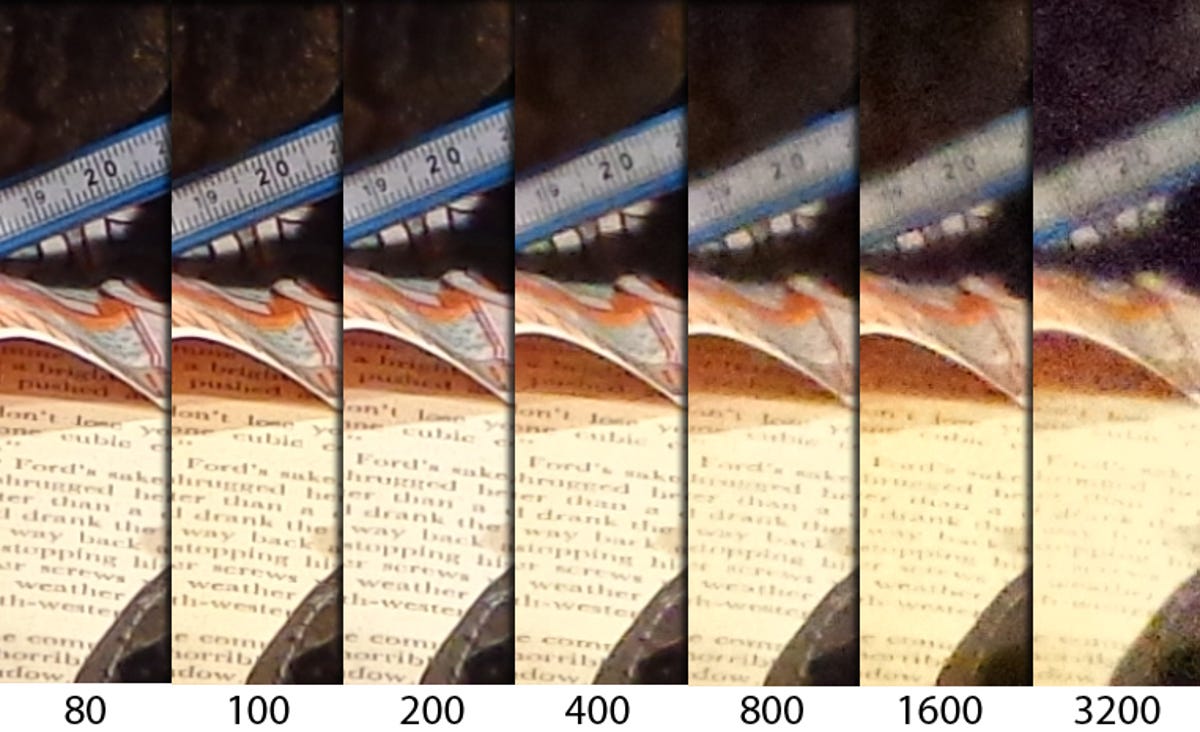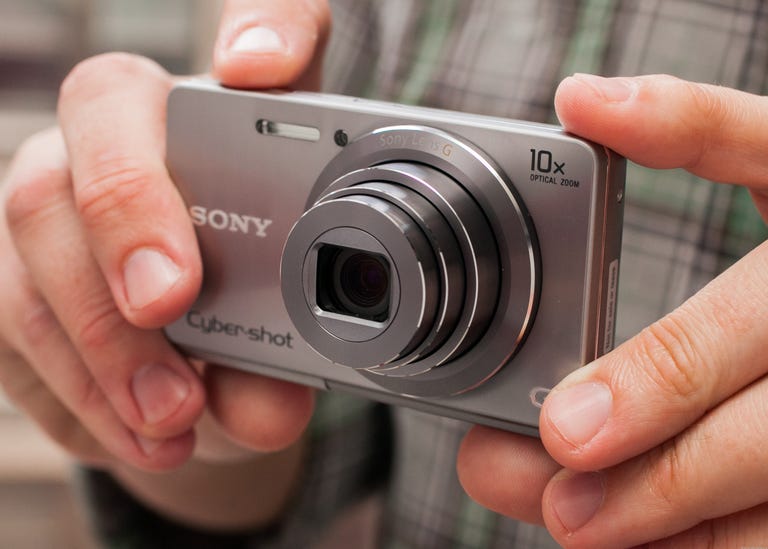 Why You Can Trust CNET
Why You Can Trust CNET Sony Cyber-shot DSC-W690 review: A pretty average point-and-shoot
Beyond its small body and nice 10x zoom lens, this is a pretty average point-and-shoot.
The Sony Cyber-shot DSC-W690 is the slower, less talented sibling of the Cyber-shot DSC-WX150. It has the same lens, ultracompact body, and a 3-inch LCD (though half the resolution), but after that, things go downhill for this little point-and-shoot.
The Good
The Bad
The Bottom Line
The W690 uses a 16-megapixel CCD instead of the 18-megapixel Sony Exmor R CMOS sensor. On the surface that might seem like just some megapixels, but the difference in sensor type is more important, with the CCD dragging down shooting performance and low-light photo quality. The W690 also doesn't share the WX150's fast autofocus system.
On top of that, you lose a lot of shooting options -- such as Sony's Superior Auto mode, high-res panorama images, 10fps burst shooting, and full-HD movie capture -- because of the sensor change. The W690 is a decent camera if you're just in need of a simple walking-around camera with a 10x zoom lens for shooting still subjects in good lighting, but the $50 to $80 price difference between the two models isn't worth the sacrifice in features and performance.
Photo quality:
Photo quality from the W690 is very good for its class, but like most compact cameras -- particularly those with CCD sensors -- it still stumbles at higher ISOs. Photos at ISO 80 and 100 are relatively sharp with a decent amount of fine detail and low noise. At ISO 200, subjects soften some, losing sharpness and fine detail. At ISO 400, images get noticeably softer and there's an increase in noise in darker areas of images. If you're printing at and below 5x7 inches and not doing much enlarging and heavy cropping, the results are usable. Photos at ISO 800 and 1600 look painterly from noise reduction, so subjects will appear soft and smeary; it's even worse at ISO 3200, making pictures unusable.

What all this means is that if most of your shooting is done outside in good lighting, the W690 will turn out very good results for the most part. The 16-megapixel resolution isn't really usable for enlarging to full size and heavy cropping. For small prints and Web sharing, though, most people should be pleased with the results.
The same can be said about its video quality. Movie clips are on par with a basic HD pocket video camera or smartphone; good enough for Web use, but you probably won't like looking at them on a large HDTV. Panning the camera will cause noticeable judder. You may also see trailing behind fast-moving subjects. Both are typical of the video from many compact cameras, though. The zoom lens does function while recording, but you will hear it in your recordings, especially in quieter scenes.
Shooting performance:
If you're considering the W690 for regularly photographing fast-moving kids, pets, and sports, I wouldn't recommend it; it's just too slow. Though its lens pops out fast, it takes about 2.5 seconds from off to first shot. Shot-to-shot times averaged 2.3 seconds. Using the flash extends that wait to around 5 seconds. Its shutter lag -- how quickly a camera captures an image after the shutter-release button is pressed without prefocusing -- is OK for its class, but still long; 0.4 second in bright lighting, and in low-light conditions the lag goes up to 0.7 second. However, having just a little less light drove the lag up to 1.9 seconds. Using the zoom lens in dim conditions will slow things down considerably, too.
Its continuous shooting speed is pretty slow, too, shooting at 0.9 frame per second. And that's with the focus and exposure set with the first shot, so if your subject is moving relatively fast, it might not be in focus for all of your photos. Now, that's not to say you won't get the occasional action shot, but the chances of you getting the shot you wanted aren't great.
Design and features
One of this camera's best attributes is its simple operation. Most people familiar with digital cameras should be able to use it out of the box, but there is a full user manual embedded in the camera for quick reference whenever you want.
A switch on the right side lets you quickly slip from shooting stills to panoramas to HD movie clips and back again. The buttons are tiny but fairly easy to press, though their markings are difficult to see in anything but direct light. What's not good in direct light is the 3-inch LCD. It gets bright, but it's still difficult to see in full sun and off-angle.
| Key specs | Sony Cyber-shot DSC-W690 |
|---|---|
| Price (MSRP) | $179.99 |
| Dimensions (WHD) | 3.8x2.1x0.9 inches |
| Weight (with battery and media) | 5 ounces |
| Megapixels, image sensor size, type | 16 megapixels, 1/2.3-inch CCD |
| LCD size, resolution/viewfinder | 3-inch LCD, 230K dots/None |
| Lens (zoom, aperture, focal length) | 10x, f3.3-5.9, 25-250mm (35mm equivalent) |
| File format (still/video) | JPEG/H.264 AAC (.MP4) |
| Highest resolution size (still/video) | 4,608x3,456 pixels/1,280x720 at 30fps |
| Image stabilization type | Optical and digital |
| Battery type, CIPA rated life | Li ion rechargeable, 220 shots |
| Battery charged in camera | No; external charger included |
| Storage media | SD/SDHC/SDXC; Memory Stick Pro Duo |
| Bundled software | PlayMemories Home (Windows); Music Transfer (Windows, Mac) |
For connecting to a computer or TV, the camera has a Micro-USB port on the bottom of the camera. A USB cable is included, but connecting directly to a display requires the purchase of a USB/AV cable.
The memory card slot and battery compartment are protected by a lockable door, which you'll have to open regularly to remove the battery for charging. Battery life is average for its size, rated at a little more than 200 shots. Using the zoom a lot, shooting video, or really doing anything more than automatic snapshots will shorten the shot count.
The W690's card slot can take an SD card or Memory Stick. Though internal memory is limited, it does host a small piece of software for quickly uploading photos and movies to sharing sites when the camera is connected to a Windows computer.
| General shooting options | Sony Cyber-shot DSC-W690 |
|---|---|
| ISO sensitivity (full resolution) | Auto, 80, 100, 200, 400, 800, 1600, 3200 |
| White balance | Auto, Daylight, Cloudy, White Fluorescent Lighting, Natural White Fluorescent, Day White Fluorescent, Incandescent, Flash, Manual |
| Recording modes | Easy, Intelligent Auto, Program, Sweep Panorama, Picture Effect, Scene, Movie |
| Focus modes | Multi AF, Center AF, Spot AF, Face Detection (Adult, Child) |
| Macro | 1.9 inches (Wide); 4.9 feet (Tele) |
| Metering modes | Multi, Center, Spot |
| Burst mode shot limit (full resolution) | 100 shots |
The W690 is designed for easy point-and-shoot use, so you won't get a lot of control over your results. The Intelligent Auto scene recognition mode turns out reliable results without any adjustments, but there are still a couple of options available, like exposure compensation, continuous shooting, and setting face detection priorities. An Easy mode takes away all options except for image size (large or small) and enlarges onscreen text.
There are 11 scene-shooting options, including Beach, Snow, Night Portrait, Pet, and High Sensitivity for low-light shooting without a flash. The camera also has a version of Sony's Sweep Panorama feature that allows you to quickly and easily take panoramic shots horizontally or vertically. Though fun, the results are just on par with a screen capture from a video clip. Consider them for Web use, viewing on a TV from a proper distance, or very small prints.
Sony added a few of its Picture Effects for those who are addicted to playing with various photo apps or just want to experiment. Options include Toy camera (with different hues to pick from), Pop Color, Partial Color (turns everything monochrome except for a selected color), and Soft High-key.
Conclusion: Recommended with reservations
The Sony Cyber-shot DSC-W690 is good considering its features and price. If you have your heart and mind set on buying it, just expect slow performance and to make sure you have a lot of light to get the best photos, especially with the lens zoomed in. In case I didn't make it clear earlier, though, the Sony WX150 is the better buy if you can afford it. Or if you're open to models from other manufacturers, check out the Panasonic Lumix DMC-SZ7 or Nikon Coolpix S6300, which offer better features and performance for about the same price as or less than the W690.


